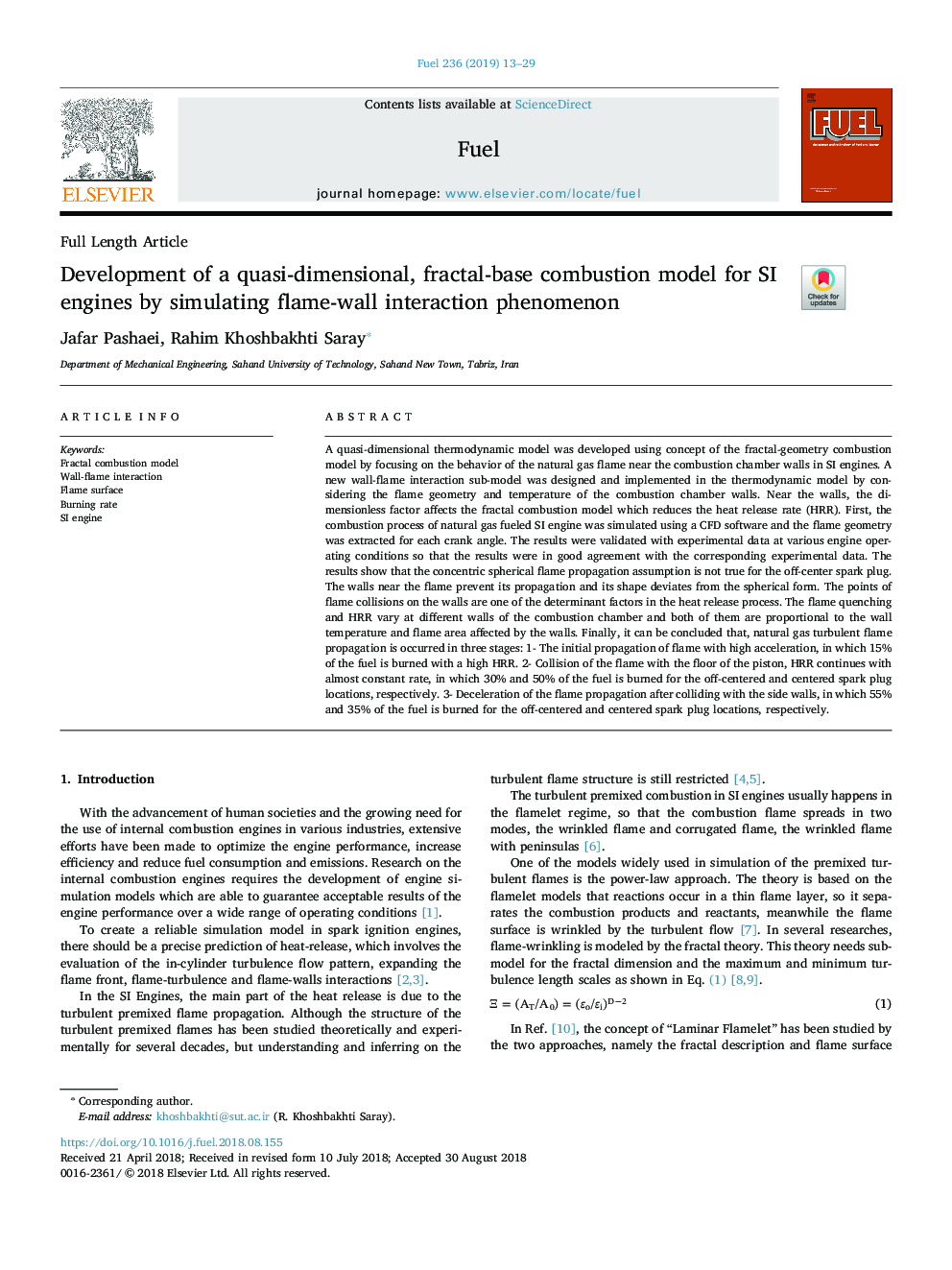| کد مقاله | کد نشریه | سال انتشار | مقاله انگلیسی | نسخه تمام متن |
|---|---|---|---|---|
| 8959861 | 1646362 | 2019 | 17 صفحه PDF | دانلود رایگان |
عنوان انگلیسی مقاله ISI
Development of a quasi-dimensional, fractal-base combustion model for SI engines by simulating flame-wall interaction phenomenon
دانلود مقاله + سفارش ترجمه
دانلود مقاله ISI انگلیسی
رایگان برای ایرانیان
کلمات کلیدی
موضوعات مرتبط
مهندسی و علوم پایه
مهندسی شیمی
مهندسی شیمی (عمومی)
پیش نمایش صفحه اول مقاله

چکیده انگلیسی
A quasi-dimensional thermodynamic model was developed using concept of the fractal-geometry combustion model by focusing on the behavior of the natural gas flame near the combustion chamber walls in SI engines. A new wall-flame interaction sub-model was designed and implemented in the thermodynamic model by considering the flame geometry and temperature of the combustion chamber walls. Near the walls, the dimensionless factor affects the fractal combustion model which reduces the heat release rate (HRR). First, the combustion process of natural gas fueled SI engine was simulated using a CFD software and the flame geometry was extracted for each crank angle. The results were validated with experimental data at various engine operating conditions so that the results were in good agreement with the corresponding experimental data. The results show that the concentric spherical flame propagation assumption is not true for the off-center spark plug. The walls near the flame prevent its propagation and its shape deviates from the spherical form. The points of flame collisions on the walls are one of the determinant factors in the heat release process. The flame quenching and HRR vary at different walls of the combustion chamber and both of them are proportional to the wall temperature and flame area affected by the walls. Finally, it can be concluded that, natural gas turbulent flame propagation is occurred in three stages: 1- The initial propagation of flame with high acceleration, in which 15% of the fuel is burned with a high HRR. 2- Collision of the flame with the floor of the piston, HRR continues with almost constant rate, in which 30% and 50% of the fuel is burned for the off-centered and centered spark plug locations, respectively. 3- Deceleration of the flame propagation after colliding with the side walls, in which 55% and 35% of the fuel is burned for the off-centered and centered spark plug locations, respectively.
ناشر
Database: Elsevier - ScienceDirect (ساینس دایرکت)
Journal: Fuel - Volume 236, 15 January 2019, Pages 13-29
Journal: Fuel - Volume 236, 15 January 2019, Pages 13-29
نویسندگان
Jafar Pashaei, Rahim Khoshbakhti Saray,